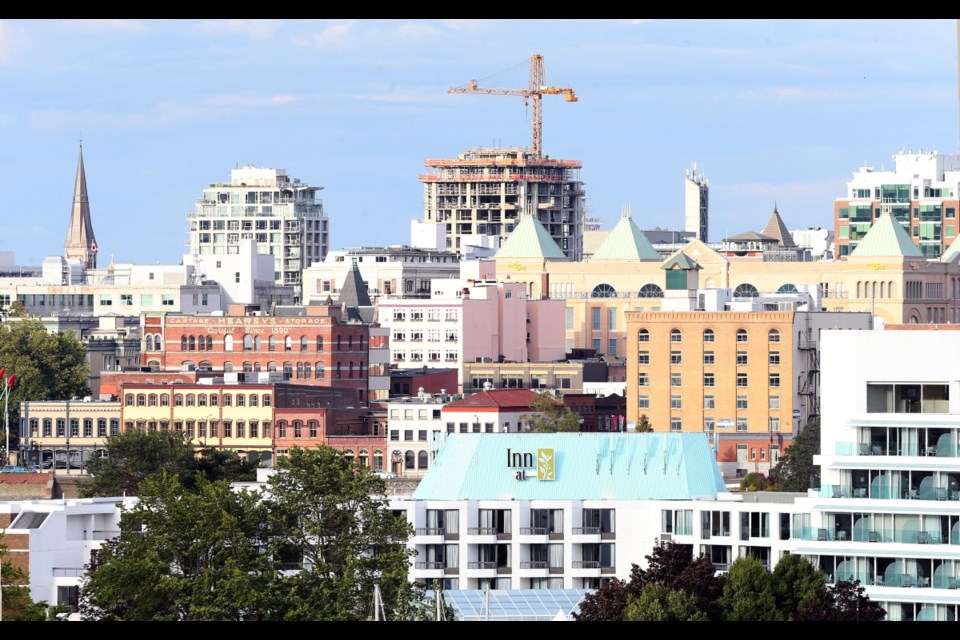Owning a home in Greater Victoria has become a little more affordable, according to the 2019 Vital Signs report released today by the Victoria Foundation.
The report, described as an annual check-up of the region’s quality of life and vitality, says the median cost for a house decreased $50,000, to $775,000, over the year ending May 2019.
Another positive indicator is the growth of the regional sports and recreation economy to more than $157 million annually. And the region’s living wage — how much you need to earn an hour for an adequate quality of life — has dropped from $20.50 to $19.39.
But while house prices dipped, rents went up an average of 7.5 per cent between 2017 and 2018. An average two-bedroom apartment costs $1,730 a month, says the report.
The south Island also continues to be plagued by illicit drug deaths. The number of deaths increased from 107 in 2017 to 126 in 2018, according to the report, which asks what Victoria will look like in 2030 — and how the community can nudge itself toward the future it wants.
“Ask just about anyone and they’ll tell you Victoria has changed a lot in the last 10 years,” said Sandra Richardson, chief executive officer of the Victoria Foundation. “This year, we wanted to project out a bit further and imagine what the future might hold for our community a decade from now.”
Dave Obee, editor and publisher of the Times Colonist, takes on the role of a futurist in the 2019 report. Obee shares his views on some of the most critical issues in the region and his thoughts on building an even better and brighter future. He envisions light rail between Langford and downtown Victoria, and between downtown and the Saanich Peninsula, which would reduce the impact on the environment and improve the accessibility of affordable housing.
Joining Obee in predicting the future is Catherine Holt, chief executive officer of the Greater Victoria Chamber of Commerce, and Jill Doucette, founding partner of Synergy Enterprises.
Holt writes that if she could devote all her time to one future project, it would be the creation of a single transportation agency to deliver an integrated, planned transportation system in the region.
Doucette imagines Greater Victoria with a world-class green economy, a clean tech sector and environmental innovation. In light of climate change, we must take serious action to change the way we live, run our businesses and build our cities, she writes.

This year, 1,695 residents from Sooke to Sidney participated in the Vital Signs survey.
They assigned grades in 12 key areas and chose the top three things they would like to see improved. They were also asked questions about quality of life, happiness, connection to the community and overall satisfaction with Greater Victoria.
Arts and culture received the highest mark of B+. Victoria’s vibrant arts and culture community, strong festival scene and performing arts are working well, residents said. But the arts and culture scene could be improved by offering more affordable activities, increasing funding to support the arts and creating more festivals and community celebrations.
Housing received the lowest grade of C-. Areas in need of improvement included the affordability of rental housing and home ownership and the need to improve alternative-housing options.
Residents were concerned about the standard of living. They said support services, affordable nutritious food and employment opportunities are working well, but adopting a living wage and reducing the income gap between rich and poor should be priorities.
Residents want to see investments in light rail and rapid transit, regional co-ordination of transportation infrastructure and improvements in bus services.
They’re concerned about the lack of family physicians, access to mental-health services and wait times for medical procedures.
While some respondents said cycling infrastructure is working well, others wanted bike lanes removed.
Still, 85 per cent of respondents described themselves as happy; 84 per cent said they feel supported by loving family, companions and/or friends.
Sixty-two per cent said they know their neighbours well enough to ask for assistance.
However, 25 per cent of respondents said they experience high or overwhelming stress associated with personal finance and 24 per cent said they were uncomfortable at least sometimes because of discrimination.
For more, visit: victoriafoundation.bc.ca/vital-signs/



